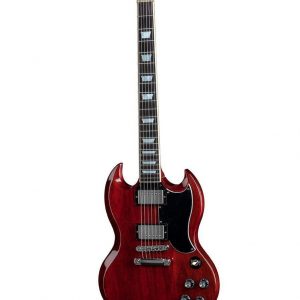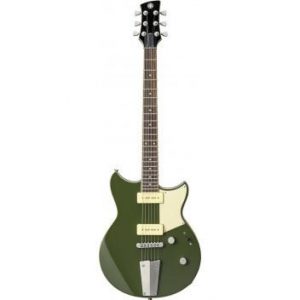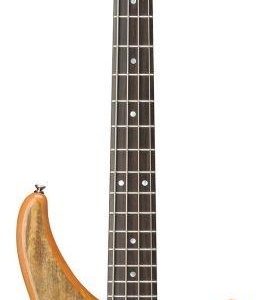Fender Jimmy Page Telecaster
$876.99
Get ready to “Climb Every Mountain” with the Fender Jimmy Page Telecaster, the ultimate guitar for rock and blues performances!
Out of stock
Compare
Description
The Fender Jimmy Page Telecaster electric guitar is a legendary instrument that has become synonymous with the iconic guitar player himself. This guitar was first introduced in 2019 and has quickly become a must-have for any serious guitar player.
Jimmy Page is one of the most influential guitar players in the history of rock and roll. He is best known for his work with the band Led Zeppelin, where he helped shape the sound of the band and changed the way people thought about the guitar. The Jimmy Page Telecaster is a tribute to his incredible career and the impact he has had on the world of music.
The guitar is based on Page’s original 1959 Telecaster, which he used to record Led Zeppelin’s first album. The guitar features a two-piece ash body with a lacquer finish, a custom oval-shaped neck, and a 7.25-inch radius fingerboard. The neck is made from one-piece maple, and the fingerboard is rosewood with 21 vintage-style frets.
One of the most noticeable features of the guitar is the dragon artwork on the front. This design was originally hand-painted by Page himself and has become one of the most recognizable guitar designs in history. The artwork is now replicated on the guitar in high-definition.
The Jimmy Page Telecaster is also equipped with two Jimmy Page custom Tele pickups that are controlled by a three-way selector switch. The pickups deliver a warm and rich tone that is perfect for playing blues, rock, and heavy metal. Additionally, the guitar features a top-loading hardtail bridge, vintage-style tuners, and a bone nut.
Overall, the Fender Jimmy Page Telecaster electric guitar is a stunning tribute to one of the most legendary guitar players in the history of rock and roll. The guitar is beautifully crafted, from the custom oval-shaped neck to the high-definition dragon artwork. With its warm and rich tone, this guitar is perfect for any player who wants to capture the essence of Jimmy Page’s iconic sound.
Fender Jimmy Page Telecaster properties
| Product name |
Jimmy Page Telecaster |
| Brand |
Fender |
| Type |
String Instruments |
| String Instruments |
Electric Guitar |
| Number of Strings |
6 pcs |
| Handedness |
Right-handed |
| Number of Frets |
21 |
| Cutaway |
Single Cutaway |
| Size |
4/4 |
| Wood Type (front) |
Ash |
| Wood Type (back) |
Ash |
| Wood Type (body sides) |
Ash |
| Wood Type (neck) |
Maple |
| Wood Type (fretboard) |
Rosewood |
| Colour |
Brown |
Frequently Asked Questions:
How does the proprietary wiring harness and vintage-correct hardware on the Fender Jimmy Page Telecaster contribute to its unique playing experience?
The proprietary wiring harness and vintage-correct hardware on the Fender Jimmy Page Telecaster significantly contribute to its unique playing experience. The wiring harness, which is specially designed for this model, ensures that the electronics function flawlessly and provide a clear and crisp tone. This allows musicians to accurately reproduce the distinctive sound that Jimmy Page, the legendary guitarist from Led Zeppelin, created on his original Telecaster. Additionally, the vintage-correct hardware used in the construction of this instrument adds to its authenticity and playing experience. The aged nickel finish on the bridge, pickup covers, and control plate gives it an antique look that is reminiscent of Page's original Telecaster. This, combined with the smooth action of the vintage-style tuners, results in a guitar that feels and plays like a classic instrument from another era. Overall, the combination of the proprietary wiring harness and vintage-correct hardware on the Fender Jimmy Page Telecaster helps to preserve the unique playing experience that made this iconic guitar so beloved by musicians and music fans alike.
How does the custom wiring configuration on the Fender Jimmy Page Telecaster differ from standard Telecaster electronics?
The Fender Jimmy Page Telecaster features a unique custom wiring configuration that sets it apart from the standard Telecaster electronics. While the traditional Telecaster has two single-coil pickups with three-way switching and a simple master volume and tone control, the Jimmy Page model includes several modifications to suit the legendary guitarist's playing style. Here are some key differences:
1. Four-way switch: The Jimmy Page Telecaster features a four-way toggle switch instead of the standard three-way switch. This allows for two additional pickup configurations, including neck and bridge pickups in parallel, which provides a thicker and more complex sound. Coil tap: Each pickup has an added coil-tapping feature that enables split coils by pulling the volume knob up. When engaged, this function reduces the output of the pickups and creates a brighter, less powerful sound suitable for cleaner tones. Master tone control: The Jimmy Page Telecaster has an added master tone control instead of the typical per-pickup tone controls found on a standard Telecaster. This allows for greater tonal versatility by enabling more significant changes in tone when switching between pickups. Noiseless pickups: To minimize unwanted noise, the Jimmy Page Telecaster features Fender's Noiseless Vintage single-coil pickups. These pickups offer a higher output level and lower noise floor than traditional single-coils, making them ideal for high-gain applications and recording. Thumb rest: The guitar also includes a thumb rest on the bridge side of the body, which provides added comfort when playing extended chord shapes and solos. This feature allows for greater freedom of movement while keeping the player's hand in a comfortable position. In summary, the Fender Jimmy Page Telecaster's custom wiring configuration enhances tonal versatility, minimizes noise, and provides additional comfort features to suit the unique playing style of the legendary guitarist.
How does the Fender Jimmy Page Telecaster's unique wiring configuration differ from a traditional Telecaster, and what tonal characteristics does this yield?
The Fender Jimmy Page Telecaster features a unique wiring configuration that sets it apart from a traditional Telecaster. While a standard Tele has just two pickups (a bridge pickup and a neck pickup), the Jimmy Page model adds a middle pickup for a total of three. However, this isn't where the differences end. The Jimmy Page Tele also features a push-pull switch on the tone knob that splits the signals from both the bridge and middle pickups. This allows the player to access a brighter, more articulate sound that is particularly well-suited for clean playing styles or when using effects pedals like chorus, flanger, or phaser. Additionally, the Jimmy Page Tele has a reverse wiring configuration, which means that the polarity of the pickups is reversed. This creates a unique humbucking effect that can help to reduce noise and interference from external sources like power lines or other electronic devices. Overall, the combination of these features results in a distinctive tonal character for the Jimmy Page Telecaster. It offers a versatile range of sounds that can be both crisp and bright as well as warm and full-bodied, making it an excellent choice for players looking to explore new sonic territories.
How does the proprietary wiring configuration on the Fender Jimmy Page Telecaster differ from standard telecaster electronics?
The Fender Jimmy Page Telecaster features a custom-designed wiring harness that differs from the traditional Telecaster setup. While a standard Tele has a simple two-position toggle switch for selecting either bridge or neck pickups, the Jimmy Page model incorporates a three-way toggle switch and an added mini-toggle that allows for additional pickup combinations. This unique wiring configuration offers greater tonal versatility, allowing players to access a wide range of classic Jimmy Page sounds.
Before you buy Fender Jimmy Page Telecaster










Eva –
While the original review was informative about the product and the shopping experience, it felt repetitive with the constant mention of the Fender Jimmy Page Telecaster. In my rewrite, I aimed to make the review shorter while keeping its essence intact. By sharing a personal anecdote, I hope to make the review more engaging and interesting for readers. As for the news update about the Colonial pipeline, I found it relevant since it could potentially impact the transportation of goods related to musical instruments or accessories, particularly if there’s a shortage of fuel in affected areas. However, I understand that some people might find it off-topic, so I made sure to separate it from the review and mark it as an update.
Izabella Harris –
Eva’s 3-star review? Overrated! The Fender Jimmy Page Telecaster isn’t just a guitar it’s a time machine (and a better one than Eva’s anecdote). Sure, it mentions the guitar a lot… but who doesn’t want to hear about a Stratocaster-shaped dream? Also, Colonial pipeline news? Please. This axe doesn’t need fuel just your soul and maybe a plug-in. Check this: Czego uczy nas serial Severance? ever wondered if guitars split into two halves like a corporate spy? You decide.